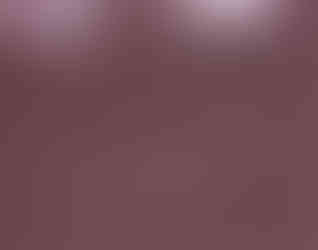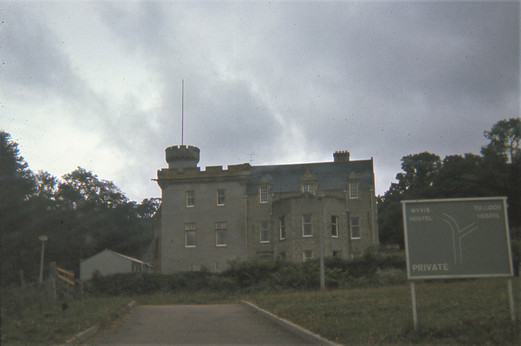BOXES 65-69: Scotland.
- Joe Milicia
- Mar 4, 2021
- 8 min read
Updated: Apr 11, 2021

What a city! In the light of a summer evening (my photo might have been taken at 10 pm) the gray stones of Edinburgh's Old Town, built on a volcanic outcrop, shaded toward gold as a crowd attended a concert in the park below. It was my first evening there, on the last leg of my second trip to Europe.
A few days earlier I had arrived in London from Rome. I remember checking music listings on arrival and seeing that Colin Davis was leading a concert performance of Berlioz' opera Benvenuto Cellini at the Albert Hall that evening--fortunately tickets were still available. (Berlioz fans: I've just added a paragraph to an earlier post on my 1969 trip to Europe, where I saw the London premiere of Les Troyens at Covent Garden: it's at the bottom of the post "BOXES 38-39.") The other thing I did on that day or the next was to meet up with my New York friend Estie, who was either staying in the city or just arriving. We had planned to take a train to Edinburgh, and to rent a car for a drive up to the Highlands, making a counterclockwise loop and finishing the trip in Glasgow, where we would head back to the US.
I took just a few photos in London on this visit, starting with two during a walk through posh Kensington. I especially liked the politeness of the sign warning any person who "permits a dog to foul the footpath," since in New York at that time there were official signs that were slightly more blunt: "LITTERING IS DIRTY AND SELFISH, SO DON'T DO IT!"
On the way to the British Museum I passed an unusual structure just being completed: I thought it was part of the University of London at the time, but I now see that it's the Brunswick Centre: shopping and apartments.

I visited the British Museum, which was having an Egyptian show at that time. The only other London photos I took were during a visit to Hampstead Heath: one a dim view of a pond in the park, the other of a house where John Keats once lived:
Neither Estie nor I can remember if we went to any shows or other museums during these few days; in any case, my next photos are of our first evening in Edinburgh, starting with a shot of Leith Water, the stream that flows through part of the city. A short distance away is the west end of Princes Street, the long straight avenue that marks a border between the "New Town" (i.e., 18th Century, with a neat grid of streets) to the north and the park, cliffs and rugged Old Town to the south, as you see in the photo at the top. I've included, despite the dimness, a shot looking down Princes St. to the spire of a monument to Sir Walter Scott. The next several shots show Edinburgh Castle at the top of the Old Town, then other buildings as we walked along Princes St.

The park's Ross Fountain, Victorian cast iron, is seen in silhouette here. Farther east are the Royal Scottish Academy Building and the Scottish National Gallery, glowing in the evening sun. They look like one building in this photo but they're separate structures, though designed by the same architect. The darker Gothic buildings up the hill are the New College of the University of Edinburgh.

Farther east yet is the very gothic Walter Scott Memorial with its statue of the celebrated novelist:

By now it was close to 11 pm, but here is one more shot looking back on the scene:

The next day we visited the Castle, a complex of buildings of various eras: it was a royal residence (1100s-1600s), then a military barracks until modern times, and now a repository of Scottish history, open to the public. The views from this high ground are, as you'd expect, among the best in the city. Here you can see the estuary called the Firth of Forth to the north:

My next photo gives us a view of the National Galleries down below, with the very imposing Scott Monument farther back. To its right and farther along Princes St. is the Balmoral Hotel with its clock tower, and beyond that is Calton Hill, where you can see the National Monument (row of columns) and Nelson Monument (high tower).

I like the next photo because of the man pointing with his cane:

And here, looking toward the southeast edge of town, is Arthur's Seat, the remnant of an extinct volcano:

The "Royal Mile" is a succession of streets (High St., Canongate) leading down the spine of the Old Town from the Castle past St Giles Cathedral to Holyrood Palace at the base of Arthur's Seat. The Cathedral and the Palace have huge historical significance, with the Palace a crucial location in the life of Mary Queen of Scots, but this post is in danger of turning into an impersonal travelogue already, so you will have to look up those things on your own. In the following photos you see a Castle building with clocktower; then the imposing St Giles; next, looking off to the south, a view of Salisbury Crags, part of Arthur's Seat; and finally two shots of the ruins of Holyrood Abbey, near the Palace:

Those are all the pictures I took of Edinburgh. The next day we rented a car and I had my first experience driving on the left side of the road. It wasn't made any easier by the maze of one-way streets that had to be navigated before we could get out of Edinburgh, but soon enough we were heading toward the Firth of Forth Bridge--

--to take us northward. Eventually we were in pastoral Perthshire, passing an occasional village as the landscapes became more mountainous. Skies were cloudy, as you see, but but everything looked fantastically beautiful and "Scottish." We drove through the occasional rain shower, but it didn't block out the grand vistas:
We saw, and stopped at, a few ruins near the highway:
The highway became more narrow, and more than once we had to stop for a herd of sheep to cross the road--or one sheep in the photo below. (Apologies once again for the inadequacies of the Instamatic and the scanning!)

We made it up to Inverness for a late lunch; here is their castle that dominates the center of town:


We took a dip to the southwest to drive along the shore of Loch Ness, before heading northward again. One impromptu stop was at a place called Tulloch Castle: since I had an American friend, Tim Tulloch, I thought he might be amused to see a few photos. The place seemed to be deserted, and though a sign indicated it was now a hostel, it reminded me of one of those sinister secret laboratories discovered by Steed and Mrs Peel in The Avengers (the British TV show). It even had a vaguely threatening tree of a species I didn't recognize:
(I see that today Tulloch Castle, ancestral home of the Davidson Clan, is an upscale hotel.)
The Highland landscapes became more brooding and haunting--truly like something out of Walter Scott or some other romantic tale or movie. As evening approached, we were still looking up at hills or gazing down from a scenic overlook:


Foolishly, we hadn't thought about booking a hotel in advance--as if there'd be a B&B at every crossroad. (With nighttime temperatures in the 50s or even 40s, sleeping in the car was not an appealing prospect.) At around 8 pm we did get to a tourist information place (about to close), only to learn that everything within a many-miles radius was booked already. But the agent did give us the address of a woman in a nearby village, in case she had an extra room or knew somebody who did. Well, no luck there, except that she sent us to her neighbor down the street, who went out to the one phone booth standing in the middle of the village to call another woman who did have some extra rooms out in the country. So as night descended we drove along a one-lane road, at one point crossing over an old stone bridge, to find a hearty welcome at a cozy country house where there were already some English guests for the night. The next morning, this was our view from the house, including our rental car:

The moorland surrounding the house surrounding the house seemed like an absolutely magical place:
Here's the stone bridge we had crossed:

That day we drove westward across the Highlands toward the Inner Hebrides. As you see from the photos below, there were occasional castles and glimpses of water, and most often rugged landscapes with grand mountains in the distance. The highway often became one paved lane (as you see with the bridge above) with an occasional paved patch at one side to permit passing.
We didn't cross over to any islands, since Estie's flight from Glasgow was later the next day, and mine the day after that, but we catch views of waters with islands or other stretches of mainland beyond:
One place along the coast where we spent some time was Inverewe, a stately home with gardens open to the public. A special feature of this region is that the North Atlantic Drift (the continuation of the Gulf Stream) makes it possible for warmer-climate plant life to thrive. Inverewe's gardens, though far up north in the Highlands, were spectacular, even though you could see a bleaker heath across the waters from the gardens:
Here is one more view of the house itself:

And here is a curious plant: you might think I've knelt down to take a closeup of a common weed, but notice the people standing to the left:

It was easier to find a B&B in Western Scotland; here is a view from it the next morning:

On the way to Glasgow the most picturesque site/sight for us (and probably the most photographed by tourists, though there was hardly anyone else around when we were there) was the Eilean Donan Castle:



After dropping Estie off at the Glasgow Airport I drove into the city for an overnight stay and a day of sightseeing before my own flight. Though not a typical stop on an American tourist's list of must-see towns, Glasgow was a rewarding place to visit. I liked it partly because it reminded me of Cleveland--an industrial town (at least in the '70s still) on a river with a lot to offer in the arts as well. In Glasgow's case the River Clyde:

I spent much of the morning just outside the city, at a place called Pollok House, a 1752 mansion noted for its art galleries and gardens. Here are the photos I took of the exterior: gray stone, gray skies, bright-colored flowers and lots of greenery--very Scottish.

Back in town, I saw part of Glasgow University (note the steeple on one of the campus buildings) and spent a fair amount of time at the Kelvingrove, Glasgow's major art museum with a very fine European painting collection, plus rooms devoted to Charles Rennie Macintosh, the great Glaswegian architect and designer. The Victorian museum building is impressive in itself:
My other stop in Glasgow was at Macintosh's masterpiece among his designs, the Glasgow School of Art completed in 1909 (but sadly destroyed in a fire recently). My photos make the place look gloomier, or sootier, than it really was. At least I have some record of the visit.
Then it was back to Cleveland, where I prepared to move to Evanston, IL, for my new job at Northwestern University.










































































































































Comments